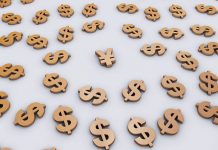Markets
A news-poor trading session yesterday didn’t prevent German yields from rebounding sharply after Friday’s setback. A belated reaction to the hawkish ECB talk or simply repositioning ahead of the end of month and/or critical data later this week? Either way, changes varied between 7.1-8.1 bps across the curve. US Treasuries outperformed, adding 1.9 to 3.6 bps. A dual US auction went smooth in the 2-y tenor but printed mixed in the 5-y. Most major equity indices eased from (record) highs. The euro traded stronger, helped higher by narrowing interest rate differentials. EUR/USD extended the mid-February recovery to 1.0851. DXY (trade-weighted dollar index) suggested some overall USD weakness was in play as well, declining to 103.827. USD/JPY continues to hover near recent highs north of 150. JPY is looking increasingly vulnerable for a sharp sell-off. If the dollar doesn’t come to the rescue, then the Bank of Japan has to. This morning’s higher-than-expected inflation numbers (see below) offer a (tiny) bit of respite. The BoJ’s core gauge (excluding food but including oil products) eased to 2% in January. That measure is expected to jump higher in February as energy subsidies distorted last year’s m/m (-0.6%) reading to the downside. Sterling lost ground throughout the session though within the technical barriers. EUR/GBP gained to 0.8554.
The eco calendar still has something to offer after the Japanese CPI numbers. The US takes center stage with durable goods orders, house price data, some regional business sentiment indicators and consumer confidence (Conference Board). Their importance for trading would have been bigger if it weren’t for the other important data that’s scheduled for release later this week (including PCE deflators and manufacturing ISM). But if anything, another solid string would further cement the idea of a first Fed cut in July rather than June. That should provide a solid floor beneath US yields. The 2-y yield is nearing the first resistance in the 4.80% region but we don’t expect that level to break. The 10-y tenor is looking at 4.40%. The dollar should soon find some support as well (EUR/USD 1.0862/1.0865), especially if equities continue to struggle for direction after they are no longer flanked by (mostly stellar) earnings releases. Several central bankers have and will hit the wires in the meantime. Kansas Fed’s Schmid in Asian dealings sees no need to preemptively adjust policy and said he’s in no hurry to halt the balance-sheet runoff. Sticking to the subject of monetary policy, the Hungarian central bank is bound to cut rates today. The jury’s out whether the MNB will stick to 75 bps to ensure forint stability or capitalize the stronger disinflation and scale up to 100 bps.
News & Views
National Japanese inflation data slowed less than hoped in January. Headline CPI declined from 2.6% Y/Y to 2.2% (vs 1.9% consensus) with the CPI ex fresh food gauge – the BoJ’s favorite – down to 2% Y/Y from 2.3% (vs 1.9% forecast). Another core gauge that excludes fresh food and energy slowed to 3.5% Y/Y from 3.7% (vs 3.3%). A jump in prices of foreign technical travel packages skewed today’s outcome as it turns out that the base of comparison for this series was January 2020, not 2023. The ministry of internal affairs and communications said that they had stopped surveying the prices for the past three years due to the difficulties in collecting stable price data following the onset of Covid. Japanese bond yields are nevertheless slightly higher this morning with the 2-yr yield at the highest level since early 2011. The Japanese yen fails to profit and remains in dire straits north of USD/JPY 150.
US President Biden said in NBC’s “Late Night with Seth Meyers” that there was an agreement in principle for a ceasefire between Israel and Hamas during Ramadan in the Gaza Strip (March 10 – April 9). In exchange, more hostages would be released. It would also allow for Palestinians to evacuate from the southern city of Rafah. The next phase in the war is expected to be an Israelian ground move into this city. US President Biden hopes that a temporary ceasefire would help change the dynamic towards a two-state solution. There has been no official reaction from Israel yet. PM Netanyahu vowed to destroy Hamas and so far rejected the two-state solution idea.














